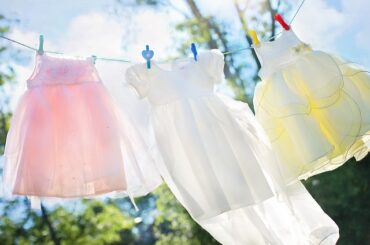Contents
When to wash clothes
Introduction:
Washing clothes regularly is a fundamental aspect of maintaining personal hygiene, preserving garment freshness, and extending their longevity. Whether it’s your favorite T-shirt, a delicate silk blouse, or a sturdy pair of jeans, regular laundering is essential to ensure that your clothes not only look clean but also feel and smell fresh. However, knowing when to wash clothes goes beyond simply adhering to a set schedule. It involves understanding the unique needs of different fabrics, considering wear frequency, and recognizing signs of soil or odor accumulation.
The significance of knowing when to wash clothes cannot be overstated. Fabric type plays a crucial role in determining washing frequency, as delicate materials like silk and wool require gentler care compared to sturdy cotton or polyester blends. Wear frequency is another important factor to consider, as items worn close to the body, such as undergarments and activewear, may need more frequent washing than outerwear or formal attire. Additionally, the level of soil or odor accumulation can indicate when clothes need laundering, as stains, sweat, and lingering odors are telltale signs that it’s time for a wash.
In this article, we will delve deeper into the importance of washing clothes regularly to maintain hygiene, freshness, and garment longevity. We will explore the various factors that influence when to wash clothes, including fabric type, wear frequency, and signs of soil or odor. By understanding these factors, you can develop a more informed approach to laundry care and ensure that your clothes not only look their best but also contribute to your overall comfort and well-being.

Guidelines for Washing Different Types of Clothing:
Undergarments:
Undergarments, including underwear, bras, and socks, should be washed after each wear to maintain hygiene and freshness.
Sweat and bacteria can accumulate quickly in undergarments, making frequent washing essential for preventing odor and irritation.
Use a gentle detergent and wash undergarments in cold or lukewarm water to preserve elasticity and prevent damage to delicate fabrics.
Everyday Wear Items:
T-shirts, tops, shirts, and pants worn for everyday activities can typically be worn multiple times before washing, depending on sweat accumulation and odor.
Aim to wash everyday wear items after two to three years, or sooner if they become visibly soiled or start to smell.
Launder these items in warm water with a mild detergent, and avoid overloading the washing machine to ensure thorough cleaning.
Outerwear:
Jackets, coats, and outerwear items require less frequent washing compared to undergarments and everyday wear items.
Spot clean outerwear as needed and wash only when visibly soiled or after prolonged use.
Follow the care instructions on the garment’s label and use a gentle cycle with cold water to avoid damaging specialty materials or coatings.
Specialty Fabrics:
Specialty fabrics such as silk, wool, and lace require special care to maintain their integrity and appearance.
Wash delicate fabrics like silk and lace infrequently to avoid damage, and always follow the manufacturer’s instructions for washing and drying.
Use a gentle detergent and hand wash delicate fabrics in cold water, or use a mesh laundry bag and a delicate cycle for machine washing.
Activewear:
Activewear garments like leggings, sports bras, and moisture-wicking tops should be washed after each wear to remove sweat, bacteria, and odor.
Wash activewear in cold water with a mild detergent to preserve moisture-wicking properties and prevent stretching or damage to elastic fibers.
Avoid using fabric softeners, as they can reduce the effectiveness of moisture-wicking fabrics and trap odor-causing bacteria.
Frequency of Washing:
The frequency of washing clothes depends on wear frequency, sweat accumulation, and fabric care requirements.
Undergarments and activewear should be washed after each wear, while everyday wear items can be washed after two to three years.
Outerwear and specialty fabrics may require less frequent washing and should be laundered only when necessary to avoid damage.
By following these guidelines for washing different types of clothing, you can maintain hygiene, freshness, and garment longevity while ensuring that your clothes look and feel their best wear after wear.

Factors Influencing Washing Frequency:
Climate:
The climate in which you live plays a significant role in determining how often clothes should be washed. In hot and humid climates, clothes may become sweaty and prone to odor more quickly, necessitating more frequent washing than in cooler, drier climates.
Activity Level:
Your level of physical activity influences how often clothes need to be washed. If you lead an active lifestyle or engage in regular exercise, activewear and workout clothes should be washed after each wear to remove sweat, bacteria, and odor.
Personal Hygiene Preferences:
Personal hygiene preferences vary from person to person and can impact washing frequency. Some individuals may prefer to wash clothes after every wear for maximum freshness and cleanliness, while others may be comfortable wearing certain items multiple times before washing.
Garment Care Instructions:
The care instructions provided on the garment’s label should always be followed to determine washing frequency and proper laundering methods. Different fabrics and clothing items have specific care requirements that influence how often they should be washed and the appropriate washing conditions to maintain their quality.
Stains and Spills:
Stains, spills, and visible dirt are clear indicators that clothes need to be washed. Prompt attention to stains can prevent them from setting and becoming more challenging to remove later. Spot cleaning or pre-treating stains before washing can help maintain garment freshness and appearance.
Odor:
Lingering odors on clothes indicate the presence of bacteria and sweat buildup, signaling that it’s time for laundering. Pay attention to any unpleasant smells emanating from clothes, especially undergarments and activewear, and wash them promptly to eliminate odor-causing bacteria.
Visible Dirt and Grime:
Visible dirt, grime, and soil on clothes are obvious signs that they need to be washed. Inspect clothes for any visible stains, dirt, or debris, and wash them as needed to remove soil and maintain cleanliness.
Wear Frequency:
How often clothes are worn directly impacts washing frequency. Items worn close to the body, such as undergarments, socks, and activewear, generally require more frequent washing than outerwear or formal attire worn less frequently.
By considering these factors influencing washing frequency, you can develop a personalized approach to laundry care that ensures your clothes remain clean, fresh, and in optimal condition after wear. Paying attention to signs like stains, odors, and visible dirt helps determine when clothes need laundering, promoting hygiene and garment longevity.
Special Considerations for Specific Fabrics:
Delicate Fabrics:
Delicate fabrics such as silk, wool, and lace require special care to maintain their integrity and appearance.
Hand washing is often recommended for delicate fabrics to minimize the risk of damage. Use a mild detergent and lukewarm water, and gently agitate the fabric without rubbing or wringing.
Avoid using bleach or harsh chemicals on delicate fabrics, as they can cause discoloration or weakening of the fibers.
Dry delicate fabrics flat or hang them to air dry, avoiding direct sunlight or heat sources that can cause shrinkage or distortion.
Wool:
Wool garments should be washed infrequently to prevent felting and shrinkage. Spot clean stains promptly and air out wool items between wears to refresh them.
Use a gentle wool detergent and lukewarm water for hand-washing wool items, and avoid agitating or wringing the fabric to prevent stretching.
To remove excess water, gently press the garment between towels and reshape it while damp. Dry wool items flat to maintain their shape and prevent stretching.
Silk:
Silk is a delicate fabric that requires careful handling to avoid damage. Hand wash silk garments in cold water with a gentle detergent, and avoid soaking or rubbing the fabric to prevent distortion.
To remove excess water, roll silk items in a clean towel and gently press to absorb moisture. Avoid wringing or twisting silk fabric, as it can cause wrinkles and damage.
Hang silk items to air dry away from direct sunlight, or lay them flat on a clean, dry surface to maintain their shape and prevent stretching.

Lace:
Lace garments should be washed gently to preserve their intricate details and delicate fibers. Hand wash lace items in cold water with a mild detergent, and avoid scrubbing or rubbing the fabric.
Rinse lace garments thoroughly to remove soap residue, and gently squeeze out excess water without wringing or twisting the fabric.
Lay lace items flat to dry on a clean towel or drying rack, reshaping them as needed to maintain their shape and prevent distortion.
Performance Fabrics:
Performance fabrics like polyester, nylon, and spandex are commonly used in activewear and sportswear. Follow the care instructions provided on the garment’s label for best results.
Wash performance fabrics in cold water with a mild detergent to preserve their moisture-wicking properties and elasticity. Avoid using fabric softeners, as they can reduce the effectiveness of moisture-wicking fabrics.
Air dry performance fabrics whenever possible to prevent shrinkage and damage from high heat. If using a dryer, use a low heat setting and remove garments promptly to prevent wrinkles and static cling.
By following these special considerations for washing delicate fabrics, specialty materials, and performance fabrics, you can maintain the integrity and appearance of your garments while prolonging their lifespan. Taking extra care when laundering delicate items ensures that they remain in optimal condition wear after wear, allowing you to enjoy them for years to come.
Hygiene and Health Implications:
Buildup of Bacteria and Sweat:
Wearing unwashed clothes can lead to the buildup of bacteria, sweat, and other bodily fluids on the fabric. Bacteria thrive in warm, moist environments, such as sweaty clothing, and can multiply rapidly if left unwashed.
The accumulation of bacteria and sweat on clothes can contribute to unpleasant odors and increase the risk of skin irritation and infections, particularly in areas of the body that come into direct contact with the fabric.
Skin Irritation and Allergies:
Unwashed clothes may harbor allergens such as dust mites, pollen, and pet dander, which can trigger allergic reactions and exacerbate skin conditions like eczema and dermatitis.
The abrasive texture of unwashed clothes, combined with the presence of bacteria and allergens, can cause friction and irritation on the skin, leading to discomfort, itching, and redness.
Odor and Body Odor:
One of the most noticeable consequences of wearing unwashed clothes is the development of unpleasant odors. Bacteria present in the fabric break down sweat and bodily oils, producing foul-smelling compounds that linger on the clothes.
Body odor can become more pronounced when wearing unwashed clothes, as the bacteria responsible for producing odor-causing compounds proliferate in the warm, moist environment of sweaty garments.
Spread of Germs and Pathogens:
Unwashed clothes can harbor various germs and pathogens, including bacteria, viruses, and fungi, picked up from the environment or transferred from the wearer’s body.
Germs and pathogens present on unwashed clothes can be transferred to other surfaces and objects, increasing the risk of cross-contamination and the spread of infectious diseases, particularly in shared living spaces and communal settings.
Prevention Through Regular Washing:
Regular washing of clothes is essential for maintaining personal hygiene and preventing the buildup of bacteria, sweat, and allergens on fabric.
Washing clothes removes dirt, bacteria, and odors, leaving garments clean, fresh, and free from potential health hazards.
By washing clothes regularly, individuals can reduce the risk of skin irritation, odor, and the spread of germs and pathogens, promoting overall health and well-being.
In conclusion, the hygiene and health implications of wearing unwashed clothes are significant, ranging from the buildup of bacteria and allergens to the spread of germs and pathogens. Regular washing of clothes is essential for maintaining personal hygiene, preventing skin irritation and allergies, and reducing the risk of odor and infections. By washing clothes regularly with a suitable detergent and following proper laundry practices, individuals can ensure that their garments remain clean, fresh, and safe to wear, contributing to their overall comfort and well-being.
Practical Tips for Laundry Care:
Sorting Clothes:
Sort clothes before washing by color and fabric type to prevent color bleeding and damage to delicate fabrics. Wash whites, lights, and darks separately to maintain garment color integrity.
Separate heavily soiled items from lightly soiled ones to prevent dirt and stains from transferring onto clean clothes.
Choosing the Right Water Temperature and Detergent:
Check the care label on garments to determine the appropriate water temperature and wash cycle. Use cold water for delicate fabrics and dark colors to prevent shrinking and fading, and use warm or hot water for heavily soiled items and whites.
Select a detergent suitable for the fabric type and washing machine. Use a gentle or mild detergent for delicate fabrics and high-efficiency (HE) detergent for front-loading washing machines.
Following Garment Care Instructions:
Read and follow the care instructions on the garment’s label to ensure proper laundering and maintenance. Pay attention to recommended washing temperature, drying instructions, and any special care considerations.
Use garment-specific laundry products such as fabric softeners, color-safe bleach, and stain removers as needed, following the manufacturer’s guidelines.
Proper Drying Techniques:
Air-dry delicate fabrics and items prone to shrinking, such as wool and silk, to preserve their shape and texture. Lay them flat on a clean towel or drying rack to dry naturally.
Use a clothesline or drying rack for outdoor drying whenever possible to save energy and reduce environmental impact.
Use a low heat setting on the dryer for most fabrics to prevent shrinkage and damage. Remove clothes promptly from the dryer to prevent wrinkles and static cling.
Ironing and Steaming:
Iron garments with care using the appropriate temperature setting for the fabric type. Use a pressing cloth or garment steamer to protect delicate fabrics from direct heat and prevent shine or scorch marks.
Hang clothes immediately after ironing to prevent wrinkles and maintain a neat appearance. Store ironed garments on hangers or neatly folded in drawers to prevent creasing.
Storage Techniques:
Store clean, dry clothes in a cool, dry place away from direct sunlight to prevent fading and mildew growth. Use breathable garment bags or cotton storage bags to protect clothes from dust and pests.
Avoid overcrowding clothes in closets and drawers to allow air circulation and prevent wrinkles. Use shelf dividers and drawer organizers to maximize storage space and keep clothes neatly organized.
By following these practical tips for laundry care, you can ensure that your clothes are cleaned effectively, maintain their quality and longevity, and look their best wear after wear. With proper sorting, washing, drying, ironing, and storage techniques, you can preserve the integrity of your garments and enjoy them for years to come.

Environmental and Sustainability Considerations:
Water Usage:
Laundry practices can have a significant impact on water usage, particularly in regions experiencing water scarcity. To reduce water consumption, consider washing full loads of laundry rather than small, partial loads, and use water-efficient washing machines.
Front-loading washing machines generally use less water than top-loading machines and are more energy-efficient. Consider upgrading to a high-efficiency (HE) washing machine to minimize water usage and energy consumption.
Energy Consumption:
Traditional clothes dryers consume a considerable amount of energy, contributing to carbon emissions and environmental pollution. Whenever possible, air-dry clothes outdoors on a clothesline or indoor drying rack to save energy and reduce your carbon footprint.
If using a clothes dryer, choose the lowest heat setting necessary to dry clothes effectively and remove them promptly once dry to minimize energy waste.
Chemical Pollution:
Conventional laundry detergents often contain harsh chemicals and synthetic fragrances that can pollute waterways and harm aquatic ecosystems. Look for eco-friendly laundry detergents that are biodegradable, phosphate-free, and made from plant-based ingredients.
Avoid using chlorine bleach and fabric softeners, as they can release harmful chemicals into the environment and cause water pollution. Instead, opt for oxygen-based bleach alternatives and natural fabric softeners like vinegar or baking soda.
Eco-Friendly Laundry Alternatives:
Washing clothes in cold water instead of hot or warm water can significantly reduce energy consumption and lower your carbon footprint. Cold water washing also helps preserve fabric colors and reduce the risk of shrinking.
Air-drying clothes whenever possible is one of the most eco-friendly laundry practices. Not only does air drying save energy, but it also helps prolong the lifespan of clothes and reduce wear and tear from heat exposure.
Consider using natural laundry boosters like baking soda or white vinegar to enhance cleaning and remove odors without relying on chemical additives. These natural alternatives are safe for the environment and can help reduce chemical pollution.
Water Conservation:
To conserve water while doing laundry, consider installing a rainwater harvesting system to collect rainwater for use in washing machines and outdoor clotheslines.
Reusing greywater from laundry for purposes like watering plants or flushing toilets can further reduce water consumption and minimize wastewater discharge into the environment.
By incorporating these environmental and sustainability considerations into your laundry practices, you can reduce your environmental impact, conserve valuable resources, and promote eco-friendly living. Making small changes such as washing clothes in cold water, air-drying whenever possible, and choosing eco-friendly detergents can collectively make a significant difference in reducing water usage, energy consumption, and chemical pollution associated with laundry.

Conclusion:
In conclusion, knowing when to wash clothes is essential for maintaining garment freshness, hygiene, and sustainability while prolonging their lifespan. By considering factors such as fabric type, wear frequency, and hygiene considerations, individuals can develop a more informed approach to laundry care that ensures their clothes remain clean, fresh, and comfortable wear after wear.
Throughout this article, we’ve explored practical tips for effective laundry care, including sorting clothes by color and fabric type, using the correct water temperature and detergent, and following garment care instructions. We’ve also addressed environmental and sustainability considerations related to laundry practices, such as water usage, energy consumption, and chemical pollution, and suggested eco-friendly alternatives and practices to minimize environmental impact.
It’s crucial to prioritize mindful laundry practices that not only maintain garment freshness and hygiene but also promote sustainability and reduce environmental harm. By washing clothes at the appropriate intervals, air-drying whenever possible, and using eco-friendly detergents and laundry alternatives, individuals can minimize their carbon footprint and contribute to a healthier planet.
In conclusion, by adopting mindful laundry practices, we can all play a role in preserving the integrity of our clothes, reducing environmental impact, and promoting sustainable living for generations to come. Let’s strive to make conscious choices in our laundry routines and contribute to a cleaner, greener future.





